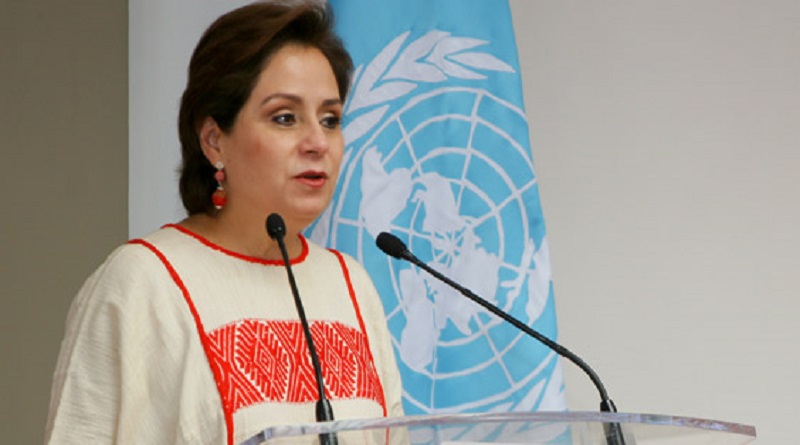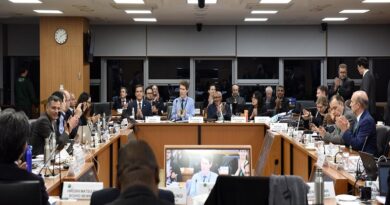UNFCCC to support nations towards 2018 milestones
The United Nations Framework Convention on Climate Change (UNFCCC) has that 2018 is poised to be a year full of important milestones where more detailed policy is to be put in place that can unleash higher ambition and stronger action now and in the future.
These milestones relate to catalysing increased climate action before 2020, coordinating an important international conversation to check progress and negotiations to unlock the full potential of the Paris Agreement.
Given the importance of reaching these milestones, UN Climate Change (UNFCCC) began assisting countries and chairs of specific negotiating forums as early as January 2018 to plan their work and map out the year.
“With countries clearly in the driving seat of the climate change process, we look forward to supporting nations towards the 2018 milestones throughout the year and at the 24th Conference of the Parties (COP24), to be held in Katowizce, Poland in December 2018,” said Patricia Espinosa, Executive Secretary of UN Climate Change.
Following the adoption and early entry into force of the Paris Climate Change Agreement, many may understandably ask why there is yet again talk of milestones in the climate change negotiations.
The short answer is that the negotiations need to enable the implementation of ever more decisive and defining climate action, including through policies. The long answer below will attempt to shed more light on this and to explain the milestones.
Action before 2020
Action before 2020 is critically important. This is mainly because countries want continuous action without any gaps given that their climate action plans (nationally determined contributions NDCs) will likely be fully implemented from 2020 onwards.
But it is equally important because strong action now lays the foundation for stronger action later. To this end, the climate change negotiations have put in place the extension of the Kyoto Protocol up to 2020, a process known as the Doha Amendment. The Doha Amendment is subject to ratification at the national level.
In the run-up to 2020, the Protocol remains an essential vehicle for many developed countries to make more rapid and urgent cuts in their greenhouse gas emissions.
The protocol, since its adoption at COP3 on December 11, 1997, has become a beacon of climate action and an inspiring precursor to the 2015 Paris Climate Change Agreement, because it demonstrated that international climate change agreements can bring the countries of the world together to address a global problem.
As of 1 March 2018, 110 Parties have deposited their instrument of acceptance. To enter Doha into force requires 144 of the 192 parties to the Kyoto Protocol.
“Thanks to Kyoto, we have built a solid foundation, paving the way for even greater action in the context of the Paris Agreement,” said Ms Espinosa,. “I urge those countries which have not yet done so to deposit their instruments of acceptance as soon as possible,” she added.
To further boost action before 2020, a special forum will take place at COP24 in Katowice in December. In preparation for this, countries may make submissions around strengthened action before 2020 by 1 May 2018.
Lastly, it is very important that developing countries receive assistance to act. To this end, developed countries committed to provide USD 100 billion per year by 2020 to leverage further significant funding.
“Developing countries need this support so they can make their contribution to global climate action and build resilient societies able to cope with the risks and minimize the impacts already underway. I urge developed countries to continue showing leadership in the provision of this support,” Ms. Espinosa stated.
Reality check: clarifying the ‘what’ and the ‘how’ in preparation for further action
Countries agreed to assess progress in 2018 towards the goals of the Paris Agreement, including the key goal of limiting the global average temperature increase to well below 2 Celsius, while pursuing efforts to limit the increase to 1.5 C.
Under the leadership of Fiji, the current COP presidency, countries decided to conduct the Talanoa Dialogue.
“The 2018 Talanoa Dialogue is an important international conversation in which countries and non-Party stakeholders will check progress and seek to increase global ambition to meet the goals of the Paris Climate Change Agreement,” said Ms. Espinosa.
The dialogue will take place throughout the year and will be structured around three questions:
Where are we?
Where do we want to go?
How do we get there?
Both countries and non-Party stakeholders such as companies, cities or regions can input into the dialogue via the Talanoa Dialogue Online Platform. Parties and stakeholders are encouraged to provide input around the three questions, ideally before 2 April 2018. This provides everyone involved with the opportunity to share information on:
A vision of the future with respect to where people want to be in terms of climate change and established goals; and
Conditions required to achieve that vision.
The Pacific island concept of ‘Talanoa’ aims at an inclusive, participatory and transparent dialogue.
The purpose of the concept is to share stories, build empathy and to make wise decisions for the collective good. The Talanoa method purposely avoids blame and criticism to create a safe space for the exchange of ideas and collective decision-making.
The dialogue will consist of a technical phase in 2018 and will end with a political phase at COP24 in Katowice.
“It is my sincere hope that the Talanoa Dialogue will culminate in providing real-world solutions to both countries and non-Party Stakeholders while providing a catalyst that can take ambition to the next level,” Ms. Espinosa said.
Unleashing full action through the Paris Agreement
While these building blocks, including the Talanoa Dialogue, are crucial towards building ambition beyond 2020, another key milestone in 2018 will be to ensure that the guidelines and rules are in place to enable the full implementation of the Paris Agreement.
Putting in place these guidelines and rules is referred to as the negotiations on the Paris Agreement Work Programme. The conclusion of this important work has been mandated to happen by the end of 2018.
The guidelines and rules are indispensable for unleashing the full potential of the Paris Agreement in all its aspects, including greater action on adaptation and building resilience to climate change impacts such as floods or droughts, reducing emissions, as well as providing the means of support to developing countries in terms of finance, technology and capacity-building.
The Paris Agreement is in and of itself a complete legal instrument. However, the completed work programme is needed to make it possible to transform legal articles of the Agreement into practical actions and to enable everyone to see how the agreement is being implemented by each individual country. As such, the work programme will be equally important to help determine whether the world as a whole is on track to achieve the goals of the Paris Agreement.
Without a completed work programme, the tools for monitoring and measuring the day-to-day efforts of implementation will not be available to countries. This could potentially undermine trust amongst countries, but also potentially lessen the scope for constructive cooperation on climate action amongst countries.
“The work programme negotiations now need to speed up to reach the important 2018 deadline,” Ms Espinosa urged. “The completed work programme needs to be balanced in terms of action for adaptation and action for reducing emissions, as well as in terms of the enabling support, and will help the world capitalize on the early entry into force of the Paris Agreement,” she added




